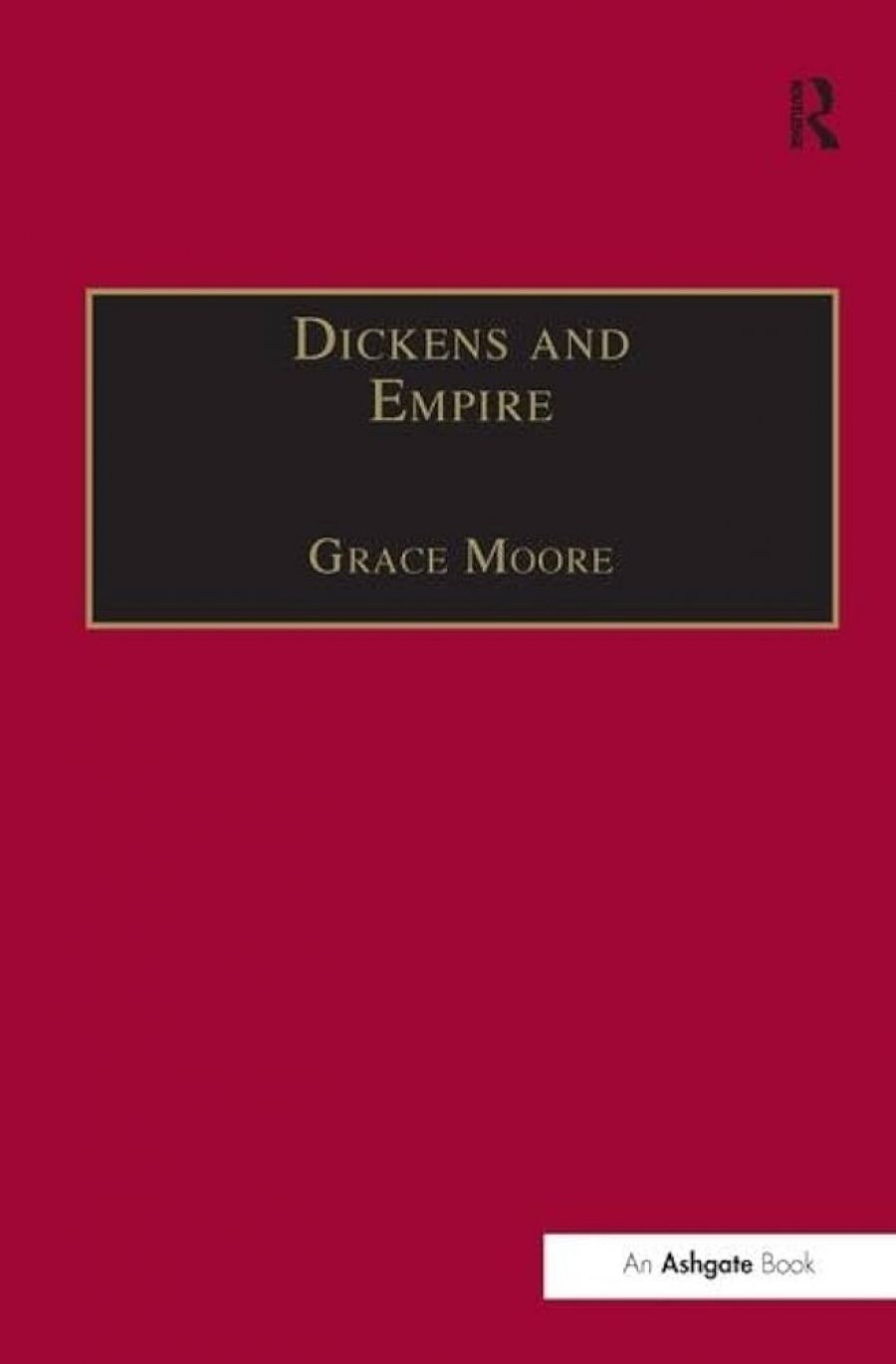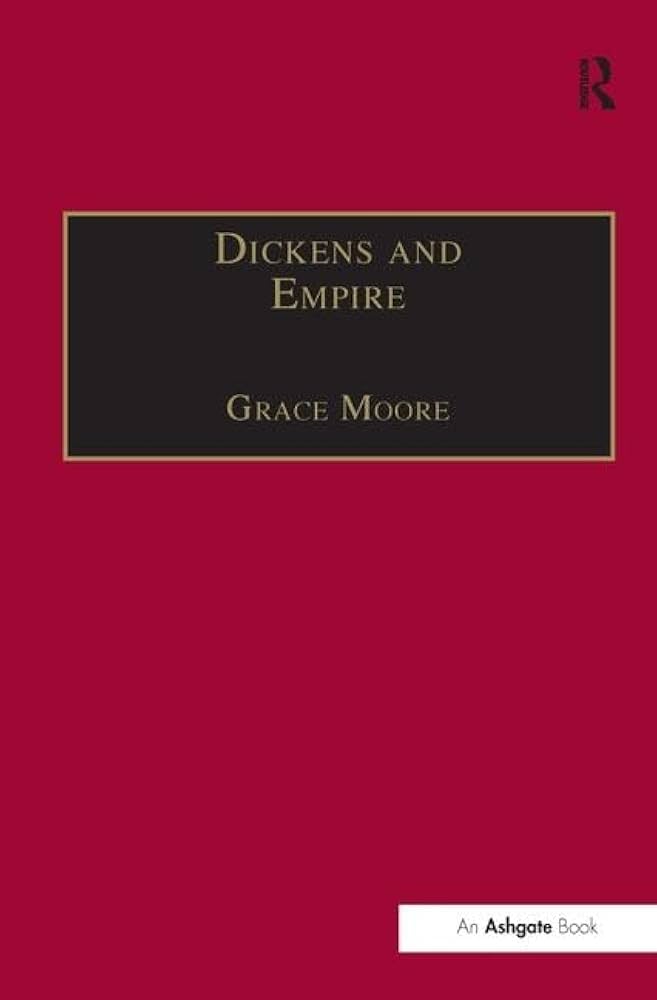
- Free Article: No
- Contents Category: Literary Studies
- Review Article: Yes
- Article Title: Beyond London
- Online Only: No
- Custom Highlight Text:
When we think of Charles Dickens, we think of London – not the imagined medieval London of William Morris, ‘small, and white, and clean’, but the contemporary London Morris described as among the ‘six counties overhung with smoke’. For Christopher Koch, in Crossing the Gap (1987), the London of his imagination was full of ‘rooms where great fires blazed in open fireplaces’. He saw it this way because ‘Mr Pickwick had warmed his coat-tails before such fires’. We know, of course, that there are plenty of other English localities in Dickens’s novels, such as the memorable marshes in Great Expectations (1860–61). We even remember that parts of his novels are set in other countries altogether, such as the American scenes of Martin Chuzzlewit (1843–44) and the Marseilles setting at the beginning of Little Dorrit (1855–57). Yet if we think of the quintessential Dickens setting, it is to London that we turn.
- Book 1 Title: Dickens and Empire
- Book 1 Subtitle: Discourses of class, race and colonialism in the works of Charles Dickens
- Book 1 Biblio: Ashgate, $124.30 hb, 220 pp
- Book 1 Cover Small (400 x 600):

- Book 1 Cover (800 x 1200):

Despite its focus on Dickens and empire, this book largely confirms our overall impression that Dickens’s prime subject was, if not London, certainly England, and particularly the parts of England suffering from the urban blight of which London was for him so appalling an example. This is partly, but here not importantly, because London was the seat of the British Empire. Much more significant in this book, and indeed integral to its argument, is that Dickens, however conscious of Britain’s imperial role, primarily saw and used the empire as a way of highlighting the woeful state of things at home. In dealing with the Crimean War, Australia, India and slavery, Dickens always saw how what happened overseas could illuminate what was happening in Britain. Thus, Grace Moore traces the way in which Dickens compared the working classes with the racial other and saw slavery in America as paralleled in domestic slavery at home. Similarly, in writing about the fiasco of the Crimea, where British bureaucracy failed to provide even the most basic necessities for its soldiers, Dickens connects this with the malignant influence of bureaucracy at home, embodied in the Circumlocution Office of Little Dorrit – those masters of ‘how not to do it’.
Nevertheless, for all this bringing of the focus back home, Dickens has much to say of the imperial scene. And here we run into a side of Dickens, his racism, which is less acceptable to us than his usual sympathy for the oppressed at home. Moore is not afraid to confront this aspect of Dickens’s work, and is willing to acknowledge the overt and very ugly racism of his calls for vengeance on the Indians for their actions in the Mutiny of 1857–58. However, the great strength of this book is that it can place such moments of hysteria in a broader context, both by treating the whole of Dickens’s writing, fiction and journalism, and by taking the long-term view. Thus, by interweaving discussion of the journalism and the novels, Moore is able to show how Dickens not only takes a more moderate journalistic line on India once he becomes aware that there are atrocities on both sides, but also treats the question of subject people goaded to revolt by intolerable treatment in a more sympathetic way through A Tale of Two Cities (1859). Furthermore, she demonstrates that Dickens did not have a consistent and unchanging attitude to racial matters, but changed over time and in response to particular events.
This wide focus is one of the book’s great virtues, as is its style, which is largely free of critical jargon. However, in its admirable coverage of the complexities of Dickens’s attitudes on class, race, and colonialism, it sometime fails, perhaps necessarily, to bring out sufficiently the other great strength of his work: his exuberant use of language. Thus, when Moore quotes Dickens’s address on the death of Jo – ‘Dead, Your Majesty. Dead, my lords and gentlemen. Dead Right Reverends and Wrong Reverends of every order. Dead, men and women born with heavenly compassion in your hearts. And dying thus around us every day’ – she rightly and pertinently points out that the denunciation extends to the whole of society from the queen downwards, but, here as elsewhere, she fails to acknowledge that terrible grim humour which makes Dickens so moving and so stimulating to read. Even in the midst of this extraordinarily pointed address to the great of the kingdom, Dickens has time to introduce the joke of ‘the Right Reverends and Wrong Reverends’, using humour to turn the language of society back on itself with devastating effect. But this is not the side of Dickens that this book sets out to explore, and, after all, if we cannot appreciate his style for ourselves, we will probably not be reading him. What this book offers us, then, is a fine account of an important part of his work that we tend to forget when we associate Dickens so closely with dark and gloomy London. In doing so, it significantly broadens our understanding of this great novelist and critic of society.


Comments powered by CComment